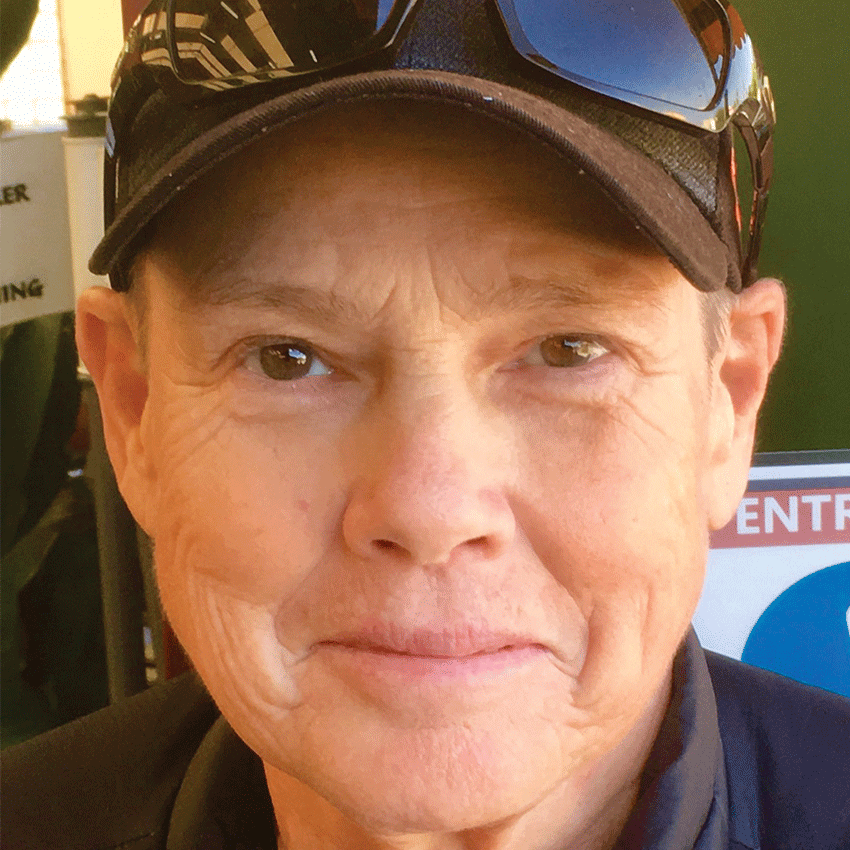Is it really a joke if no one’s laughing? One would think a professional comedian, especially one who is often mentioned in the same sentence as Lucille Ball and Mary Tyler Moore, would have a ready answer to such a question. But one night last month, Roseanne Barr’s comic instincts—honed over three decades at the top of her field—failed her spectacularly. For reasons that still mystify her fans and her critics alike, Barr tweeted a “joke” that compared a prominent African-American woman to an ape.
By the next morning, she had apologized, but the news cycle was already madly churning. An hour and a half after Barr’s apology, African-American comedian Wanda Sykes, who was a consulting producer on ABC’s successful Roseanne reboot, announced she was quitting. Soon after that, Roseanne co-star Sara Gilbert condemned Barr’s joke. By mid-afternoon, barely 11 hours after the original tweet, ABC announced it was cancelling the highest-rated and most-watched series on broadcast television this year.
Before nightfall, Barr’s talent agency had dropped her as a client, and by the next morning, the president of the United States had weighed in on the controversy, also on Twitter, bizarrely suggesting that he was somehow owed an apology. After Barr insinuated that Ambien might have had something to do with her joke, the makers of the sleep aid deadpanned that “racism is not a known side effect” of any of their drugs.
In the following days, other jokes turned into mini eruptions of passing controversy. Samantha Bee’s c-bomb at Ivanka Trump backfired. Conan O’Brien caught heat for comments about Melania Trump. All, including Bill Maher’s years-old and oft-repeated cracks comparing Donald Trump to an ape, were packaged—and avidly consumed—as breaking news.
Walter Cronkite and the Ghosts of Journalism Past would likely be bewildered at the Roseanne Barr grease fire, but none of it surprises Ken Jennings.
Jennings is the affable podcaster and author who first came to mainstream attention for his record-breaking run as a Jeopardy! contestant back in 2004. His new book, Planet Funny: How Comedy Took Over Our Culture, anticipates nearly every turn in the Roseanne saga, from the absurdity that a sitcom—once thought of as one of the most disposable and frivolous of cultural artifacts—has assumed such political importance, to social media’s power to amplify bad jokes that otherwise might not have survived outside the womb, to corporate America adopting snarky humor as a public-relations strategy.
Planet Funny makes a case that is more specific (and more ambivalent) than the decades-old complaint that “entertainment values” are ruining the news media. In the new book, Jennings illustrates not only how comedy has evolved from a straightforward mode of mass entertainment into a bewildering web of associations and references, but also how the voice of derisive outsider humor has become integral to a worldview that fuels toxic cynicism in public life.
I interviewed Jennings before the Roseanne tweet, but after a similarly loud kerfuffle, comedian Michelle Wolf’s controversial set at the White House Correspondents Dinner. “I think it’s a great example of how we’re policing jokes now more than ever,” he says of the Wolf story, “because pretty much across the ideological spectrum, we’ve realized their power. We’re no longer willing to give joke-tellers these little carve-outs for being a wise truth-teller, because everyone now has a platform for that on social media.”
Peak Comedy
For the comedy fan, this brave new world has its delights. If tragedy is eternal, the nature of comedy is that it’s perishable. It has to change or die. And in recent decades, comedy has become more sophisticated and stimulating. Sitcoms from the 1960s or ’70s seem leaden and obvious compared with the pure speed and dexterity of such shows as 30 Rock or Community. Comedy has colored everything from literature to advertising to political stump speeches.
“We’ve all kind of internalized the voice of comedy,” says Jennings. “We understand this new snarky layer that overlays everything in our culture. But we still are not all equipped with how jokes actually function. And now, it’s very important to be good at understanding the mechanics of jokes.”
That snarky voice has its roots in magazine culture, namely, Mad, National Lampoon and especially Spy in the 1980s. It took hold in counterculture stand-up and skit comedy from George Carlin to Saturday Night Live. But, as Jennings points out, the engine that turbo-charged snide comedy into the mainstream was Twitter. Comedy fans from the boomer and Gen-X generations can still remember the scarcity model of edgy stand-up and skit comedy—there were comedy albums, bits on The Tonight Show and a few other places on network TV, and the occasional, often inaccessible HBO special.
Cable, then the internet, destroyed that model—but Twitter turned it on its head, creating battalions of amateur quipsters of varying quality. Suddenly, comedy was crowd-sourced and flash-mobbed.
“There’s this engine now that generates jokes and joke-tellers, where you can see a hundred jokes a minute,” Jennings says. “As a kid, I’d watch sitcoms and there’d be three or four good jokes and I’d wonder, ‘How did they do that?’ It just seemed like a magic trick to me. Now, when you see hundreds and hundreds of jokes every day, you start to see the rules, the mechanisms. Here’s the new meme where you can put a different caption on it. It’s like training wheels for your mind.”
For comedy nerds, such a state sounds like nirvana. As amateur online comedy has metastasized on Twitter, Reddit and other sites, professional comedy has had to step up its game. Early on in Planet Funny, Jennings includes a hand-drawn map of dozens of connected comedy sources from Aristophanes and Moliere to Doonesbury and Colbert. The comedy world today is a series of neighborhoods, many of them comforting and familiar, others bizarre and perplexing. Fans of New Yorker cartoons and Weird Al Yankovic may be utterly at sea with South Park or Judd Apatow, and vice versa.
“It’s just too big a world now,” Jennings says. “You cannot follow all the good comedy that’s out there. You can’t really follow all the great comedy that’s out there. There’s a kind of one-upmanship going on. The comic tone keeps getting more rarefied and specialized and stranger, to keep that insider appeal. But also because novelty is so important to a joke.”
Post Postman
But just as eating dessert all the time instead of nutritious meals can lead to diabetes, too much snide comedy can create a toxic culture. The Jennings book is an echo of another groundbreaking book from 1985 by social critic Neil Postman. Amusing Ourselves to Death was a jeremiad against the dumbing down of contemporary culture and an assertion that the dystopia threatening modern America was not Orwell’s 1984, but instead Huxley’s Brave New World, where citizens would willingly give up freedoms in exchange for pleasures and distracting entertainment.
“He, of course, presciently wrote in the early ’80s, before the internet started to make his worst predictions come true,” Jennings, 44, says of Postman. “I’m more conflicted than he was. I love comedy. It’s a huge part of my identity, from the moment I was the class clown in school. I’m very reluctant to grapple with the idea that it might not be good for us.”
Planet Funny traces the development of what Jennings calls “the voice,” the specific tone that characterizes modern American satirical humor. The voice may have had its pioneers—Chevy Chase on SNL’s Weekend Update, John Candy on Second City, Steve Martin in his “Wild and Crazy Guy” days. But its jump into the news business, says Jennings, may have come by way of Spy magazine, the inspirational forebear of both The Onion and The Daily Show.
“They were onto Trump before anyone else,” Jennings says of the snarky, gossipy magazine that published between 1986 and 1998. “They wrote about Cosby and Schwarzenegger being awful when everyone else was giving them honorary degrees and awards for being great family men. They were very ahead of their time. They were like the Velvet Underground. They only lasted a few years, but every kid that read it figured out how to do ‘the voice.’”
Blurred Lines
Maybe the most controversial part of Planet Funny is Jennings’ assertion that this new satirical culture is largely responsible for the election of Donald Trump, who has thus far carried his pre-presidential “act” into the White House. What liberals hear as lies and outrages, he says, Trump supporters often hear as edgy satire.
“I really do think that’s what people were thinking coming out of those (Trump campaign) rallies: ‘Look at this guy. He’s such a straight shooter. He’s finally saying what we’re all thinking,’ which is kinda the same thing all those frat boys were saying coming out of Dane Cook shows. It’s not that different,” says Jennings. “Now the unspoken thing is just to be as over-the-top as you can. Make them roar in the aisles. That’s the path to power.”































